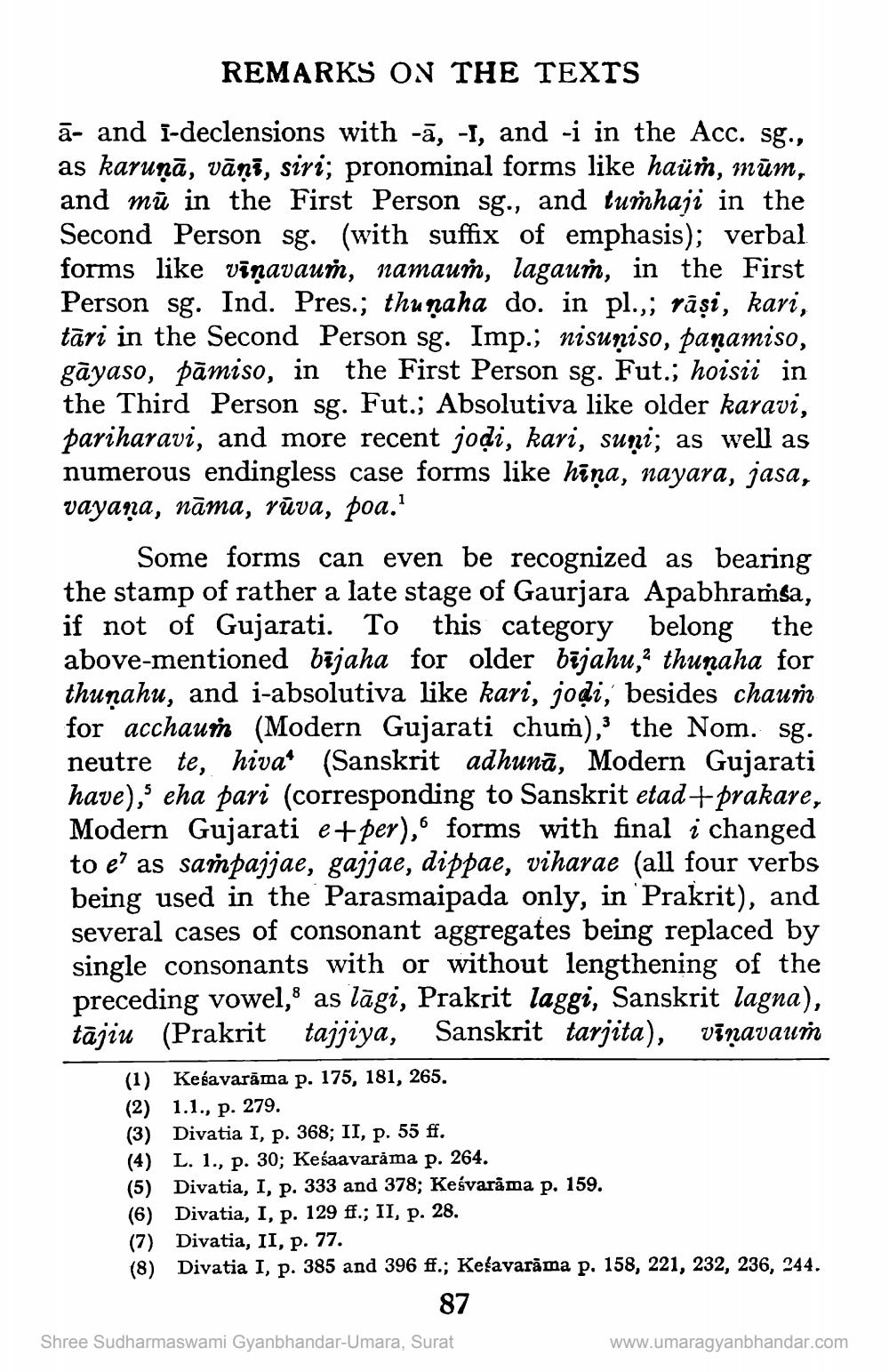________________
REMARKS ON THE TEXTS
ā- and i-declensions with -ā, -I, and -i in the Acc. sg., as karunā, vāni, siri; pronominal forms like haün, mūm, and mū in the First Person sg., and tushaji in the Second Person sg. (with suffix of emphasis); verbal forms like vīņavauń, namaun, lagaun, in the First Person sg. Ind. Pres.; thuņaha do. in pl.,; rāși, kari, tāri in the Second Person sg. Imp.; nisuņiso, paņamiso, gāyaso, pāmiso, in the First Person sg. Fut.; hoisii in the Third Person sg. Fut.; Absolutiva like older karavi, pariharavi, and more recent jodi, kari, suņi; as well as numerous endingless case forms like hiņa, nayara, jasa, vayana, nāma, rūva, poa.'
Some forms can even be recognized as bearing the stamp of rather a late stage of Gaurjara Apabhramsa, if not of Gujarati. To this category belong the above-mentioned bijaha for older bijahu,? thunaha for thunahu, and i-absolutiva like kari, jodi, besides chauri for acchaur (Modern Gujarati chum), the Nom. sg. neutre te, hiva* (Sanskrit adhunā, Modern Gujarati have), eha pari (corresponding to Sanskrit etad+prakare, Modern Gujarati e+per), forms with final i changed to e as sampajjae, gajjae, dippae, viharae (all four verbs being used in the Parasmaipada only, in Prakrit), and several cases of consonant aggregates being replaced by single consonants with or without lengthening of the preceding vowel, as lāgi, Prakrit laggi, Sanskrit lagna), tājiu (Prakrit tajjiya, Sanskrit tarjita), vinavaus
(1) Kesavarāma p. 175, 181, 265. (2) 1.1., p. 279. (3) Divatia I, p. 368; II, p. 55 ff. (4) L. 1., p. 30; Kesaavarama p. 264. (5) Divatia, I, p. 333 and 378; Kesvarāma p. 159. (6) Divatia, I, p. 129 ff.; II, p. 28. (7) Divatia, II, p. 77. (8) Divatia I, p. 385 and 396 ff.; Kelavarāma p. 158, 221, 232, 236, 244.
87
Shree Sudharmaswami Gyanbhandar-Umara, Surat
www.umaragyanbhandar.com




